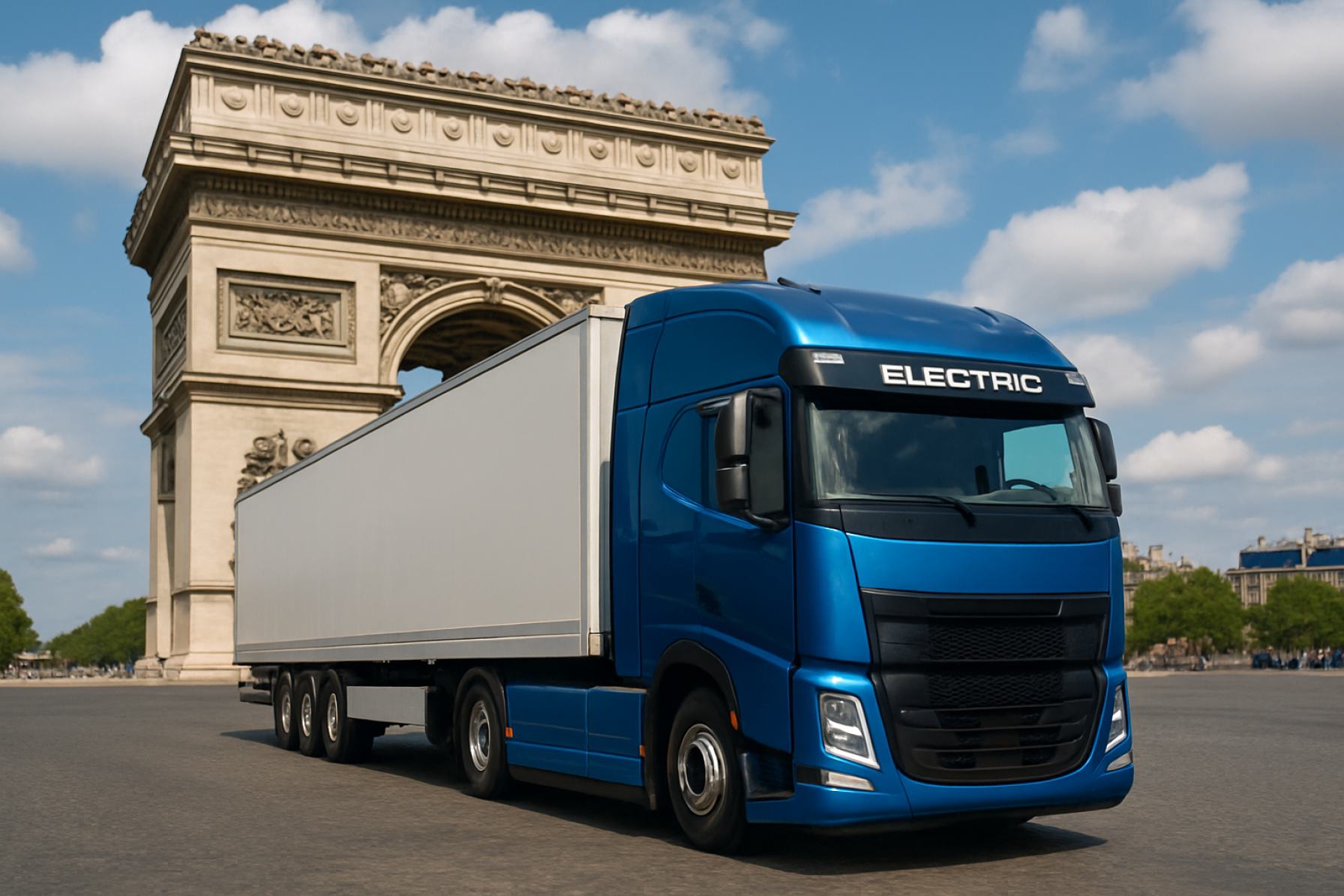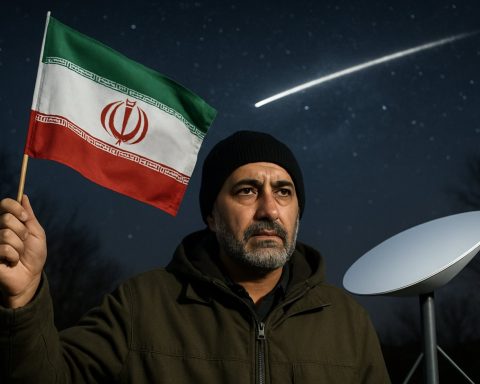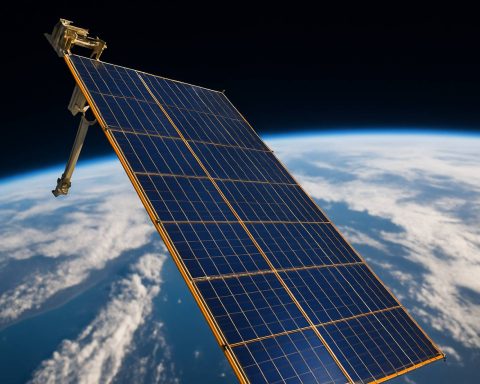- Windrose Technology, a young Chinese company, is making waves in the French auto industry with innovative electric trucks and a €175 million plant investment.
- The push into Europe comes amid EU-China trade tensions, fueling debates about job creation, green mobility, and the impact on local automakers.
- Windrose plans to expand rapidly, with ambitions for large-scale production in France and stock market listings in the U.S. and Paris.
- France views partnering with global EV startups as a chance to advance electrification and develop a robust electric vehicle ecosystem.
- Europe faces a balancing act: welcoming innovation and investment while protecting its economic interests and industrial sovereignty.
In the golden halls of French industry, where established automakers have long set the pace, a surprising new player has captured the spotlight: Windrose Technology. Guided by the vision of Wen Han, a dynamic Chinese entrepreneur, this three-year-old company is bringing its futuristic electric trucks to Europe—staking €175 million to build a manufacturing plant in northern France.
President Emmanuel Macron, always eager for transformative investments, looked both curious and impressed as he examined a model of Windrose’s sleek, snow-white lorry. The truck’s aerodynamic profile—sharp-nosed and centered around a single, central driving seat—signals more than innovation in aesthetics; it represents the next wave in green mobility.
The timing is tense. The European Union remains entangled in a high-stakes trade dispute with China, particularly over the accelerating pace of electric vehicle (EV) exports. Questions swirl: Will the influx of Chinese EV technology fuel job growth and green progress across Europe, or will it overpower homegrown industries and threaten established automakers? This is more than an industrial gambit; it’s a defining test for Europe’s economic sovereignty and climate strategy.
Windrose Technology, though currently modest in fleet—only 30 trucks roll the world’s highways—harbors grand ambitions. Han’s plans don’t stop at 4,000 annual units by 2027 in France. He envisions expansion across the Atlantic, with plans to float Windrose on a U.S. stock exchange and a secondary listing in Paris. The company aims to plant roots deep enough to create an entire electric vehicle ecosystem, from supply chain to software, centered in Europe’s industrial heartland.
France sees an opening: by embracing the expertise and capital of upstart firms like Windrose, it could potentially leapfrog competitors in the race to electrification. This bold wager also hints at a possible new model for industrial collaboration—inviting global innovators while negotiating protections for local jobs.
Yet, beneath the optimism, the shadows of uncertainty remain. The debate over Chinese investment is intensifying. The EU, with leaders determined to bolster its European Union manufacturing champions, faces a balancing act between welcoming disruptive talent and safeguarding economic interests.
Windrose’s arrival underscores a crucial point for policymakers, industry, and citizens alike: the global auto industry’s tectonic shifts demand swift, strategic decisions. Those who adapt will shape the fabric of tomorrow’s transport—and lay claim to the prosperity and sustainability it promises.
The key takeaway: As the world’s automotive powerhouses jostle for position, embracing innovation and international partnerships—cautiously and cleverly—could be the difference between riding the new wave or being swept aside by it.
The Secret Battle Behind Europe’s Electric Truck Revolution: Windrose’s Bold Gamble Shakes Up the Industry
# Introduction
Europe’s automotive landscape is undergoing a seismic transformation as Windrose Technology, a young Chinese electric truck manufacturer, enters the heart of French industry. With a staggering €175 million investment in a new plant and ambitions that stretch beyond continent borders, Wen Han’s company isn’t just riding the EV wave — it aims to change the very rules of the game. But how will this newcomer reshape Europe’s green transport revolution, industry competition, and economic sovereignty? Let’s uncover the deeper story, expert opinions, market trends, and critical questions shaping Windrose’s European debut.
—
# What Makes Windrose Technology Different?
Windrose’s Value Proposition:
– Central Driving Seat & Aerodynamic Design: Windrose trucks feature a Formula 1-style central driving seat, enhancing safety and visibility.
– Full Electric Powertrain: The trucks emit zero tailpipe emissions, contributing directly to Europe’s 2050 net-zero goals ([European Union](https://europa.eu)).
– Advanced Connectivity: Telematics and software integrations for real-time fleet management, catering to logistics companies embracing smart technologies.
– Modular Manufacturing: The new French facility is designed for scalability, enabling quick production adjustments in response to demand and regulatory shifts.
Specs & Features (Based on Available Data):
– Range: Early prototypes boast 400km+ per charge, rivaling leading Western brands.
– Fast-Charge Capabilities: Estimated 80% battery recharge in under 60 minutes.
– Driver Ecosystem: Ergonomically advanced cockpit with augmented reality (AR) support for navigation and diagnostics.
—
# Real-World Use Cases & Market Impact
Use Cases:
– Urban & Regional Freight: Designed for dense city logistics and short to mid-range regional hauls, aligning with tightening urban emissions regulations.
– Distribution Partnerships: Potential collaborations with grocery, parcel, and retail giants moving towards sustainable logistics.
Market Trends:
– Europe’s electric truck market is forecasted to grow at over 30% CAGR by 2030 ([Statista, IEA](https://iea.org)), driven by emissions mandates and corporate sustainability.
– France’s government offers generous incentives for EV manufacturing, including tax credits and infrastructure investments.
– Local competitors (e.g., Renault, Volvo) are rapidly electrifying, but Windrose’s agile R&D could leapfrog innovation cycles.
—
# Reviews, Comparisons & Expert Opinions
Windrose vs. Traditional European Brands:
– Pros: Cutting-edge design, lower projected production costs, rapid prototyping due to vertical integration.
– Cons: Lack of established service networks, perceived geopolitical risk, uncertainty around long-term reliability.
Expert Insight:
Automotive analyst Ferdinand Dudenhöffer comments, “Windrose’s bold France move could trigger a price and innovation race in Europe’s electric truck sector—heightening pressure on legacy manufacturers to adapt faster.”
—
# Pressing Reader Questions Answered
1. Why is France welcoming a Chinese manufacturer during trade tensions?
France aims to attract EV investment to boost jobs, competitiveness, and green infrastructure. By setting plant ownership and local employment stipulations, it seeks to balance foreign capital with domestic interests.
2. Are Windrose trucks compatible with European charging infrastructure?
Initial reports say the trucks use standard CCS2 charging connectors, ensuring compatibility with most EU truck-charging stations.
3. How safe and sustainable are Windrose’s supply chains?
Windrose commits to sourcing batteries and components partly from within Europe, adhering to EU supply chain transparency and low-carbon standards. However, full details are pending regulatory reviews.
4. What risks or controversies exist?
– Trade Disputes: Ongoing EU-China tensions may affect tariffs or access to government contracts.
– Industrial Pushback: European automakers and unions fear job displacement and loss of technological leadership.
– Adoption Pace: Logistics operators may be hesitant to switch until service and support networks are mature.
—
# Security, Sustainability, and Industry Evolution
– Cybersecurity: Windrose is expected to comply with new EU regulations on vehicle software security, vital for connected trucks.
– Recycling & Lifecycle: The company claims its battery packs are up to 80% recyclable, aligning with stringent EU end-of-life mandates.
– Sustainability Pledge: Target of net-zero emissions across its European operations by 2035.
—
# Forecasts, Limitations & Predictions
– Market Forecast: Windrose’s entry could lower average industry prices and accelerate electrification, with analysts predicting a shift in market share by 2028 if Windrose delivers at scale.
– Limitations: Brand unfamiliarity, after-sales support gaps, and potential regulatory roadblocks remain hurdles.
– Prediction: Expect further alliances or joint ventures with European parts suppliers, and likely expansion into commercial van and bus segments within three years.
—
# Quick How-To: What Fleet Operators Can Do Now
1. Assess Readiness: Begin pilot testing of electric truck models (Windrose and competitors) to gauge operational fit.
2. Prepare Infrastructure: Invest in depot charging stations compatible with multiple brands.
3. Monitor Policy: Track updates from the [European Union](https://europa.eu) regarding incentives, tariffs, and cross-border transport regulations.
4. Negotiate Early Adopter Terms: Engage with manufacturers for custom fleet deals and extended service contracts.
—
# Actionable Recommendations
– For Policymakers: Embrace international innovation while tightening rules around labor, technology transfer, and environmental compliance.
– For Logistics Firms: Diversify OEM partnerships, test new EVs in select routes, and leverage government funding.
– For Job Seekers: Upskill in EV maintenance, manufacturing, and software, where new jobs will accelerate fastest.
—
# Final Thoughts
Windrose Technology’s foray into France isn’t just disruptive — it’s symbolic of the global struggle to shape the next era of sustainable transport. Whether Europe rides this new wave or gets swept aside will depend on its willingness to adapt, innovate, and collaborate without ceding economic sovereignty. As this new energy arms race unfolds, the smartest players will not only survive, but lead.
Stay informed, stay flexible, and start preparing for the new era of electric trucking today.









